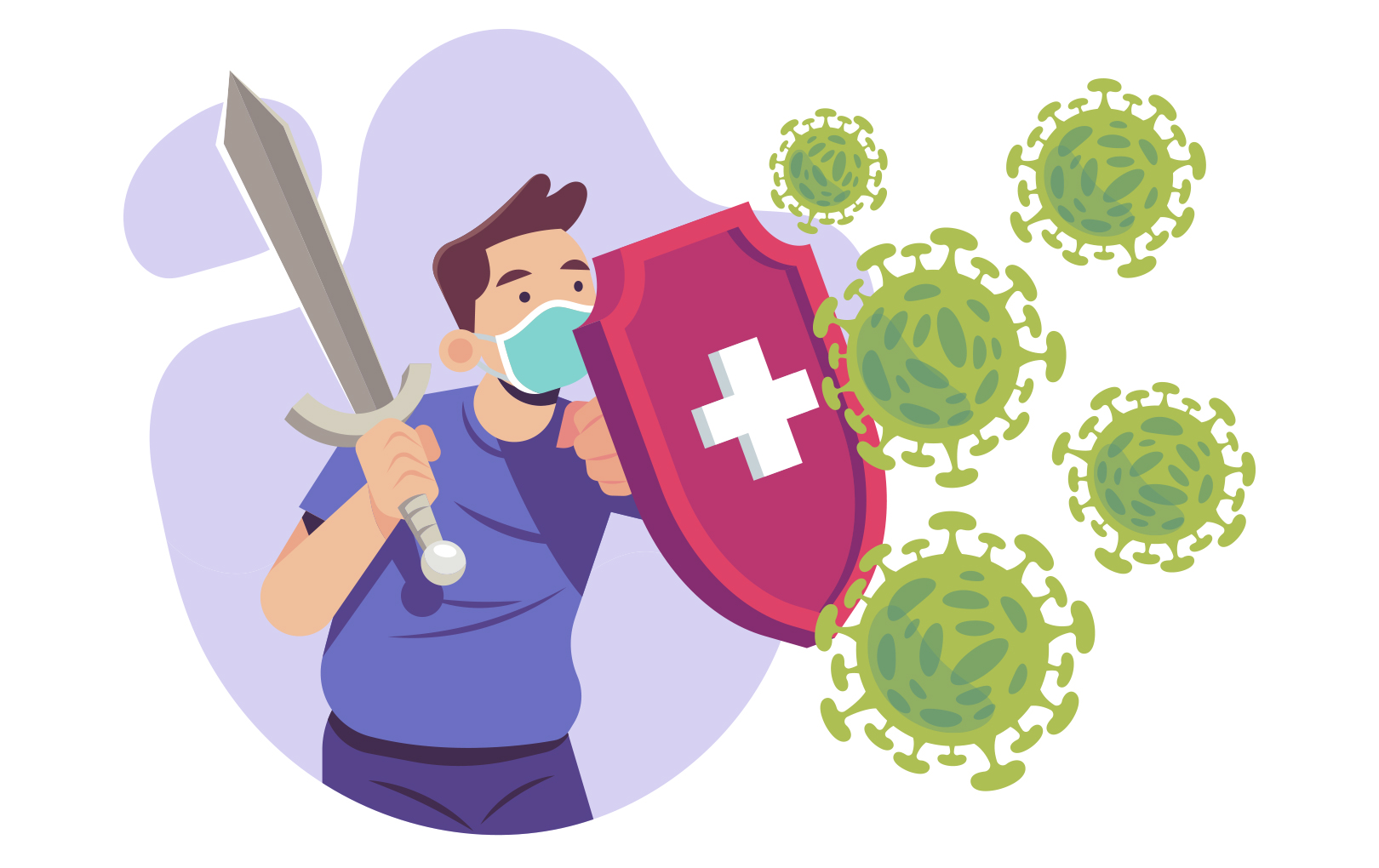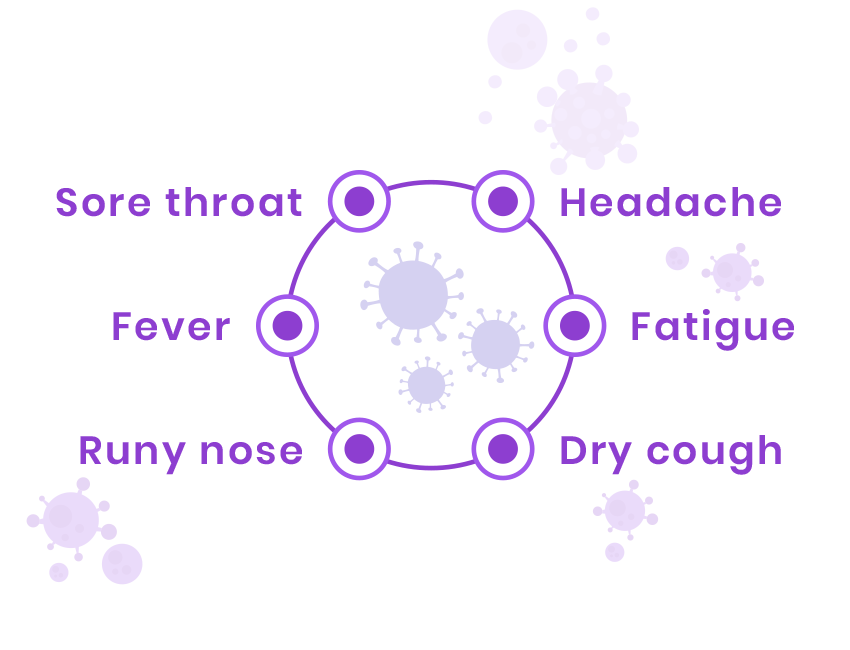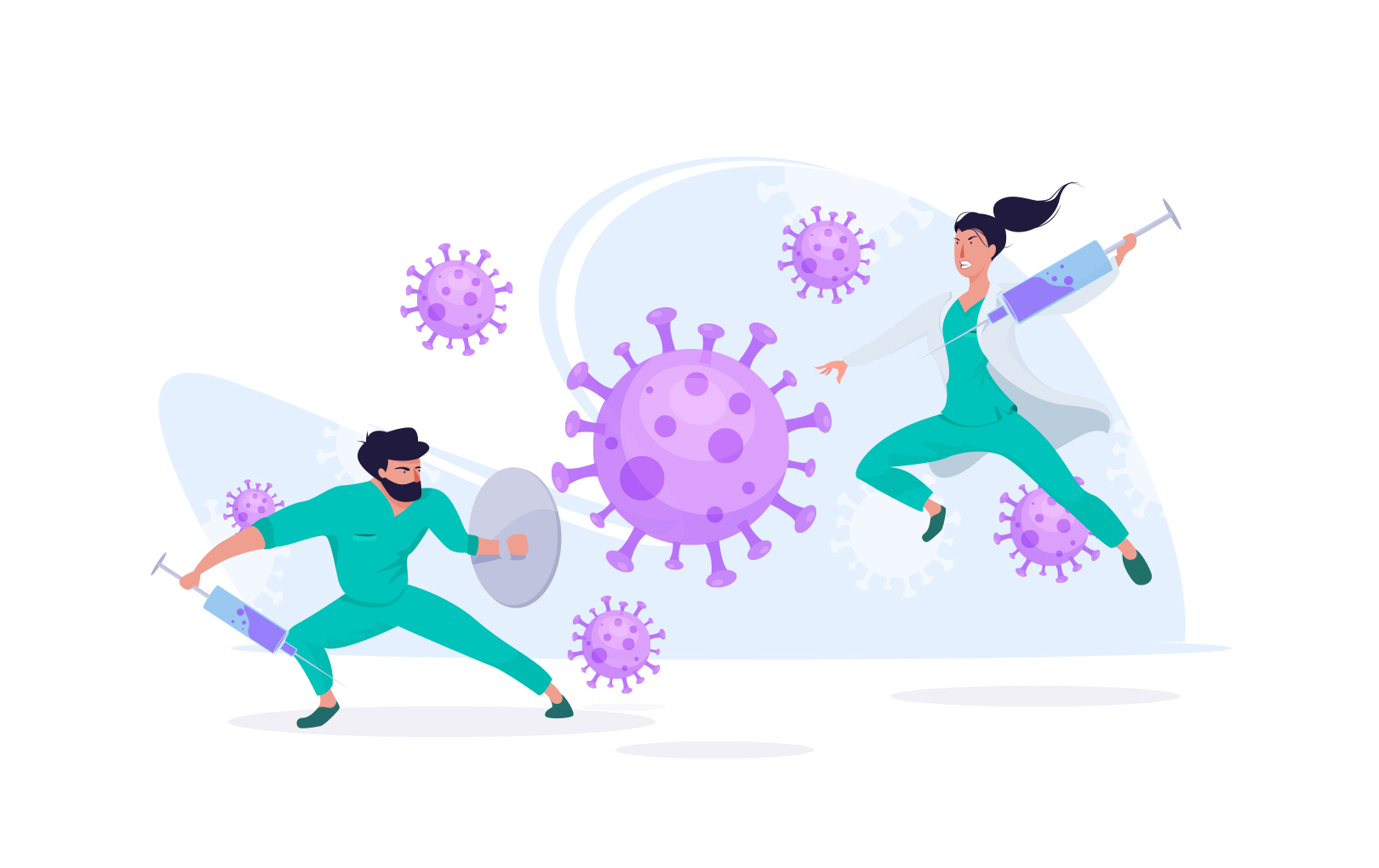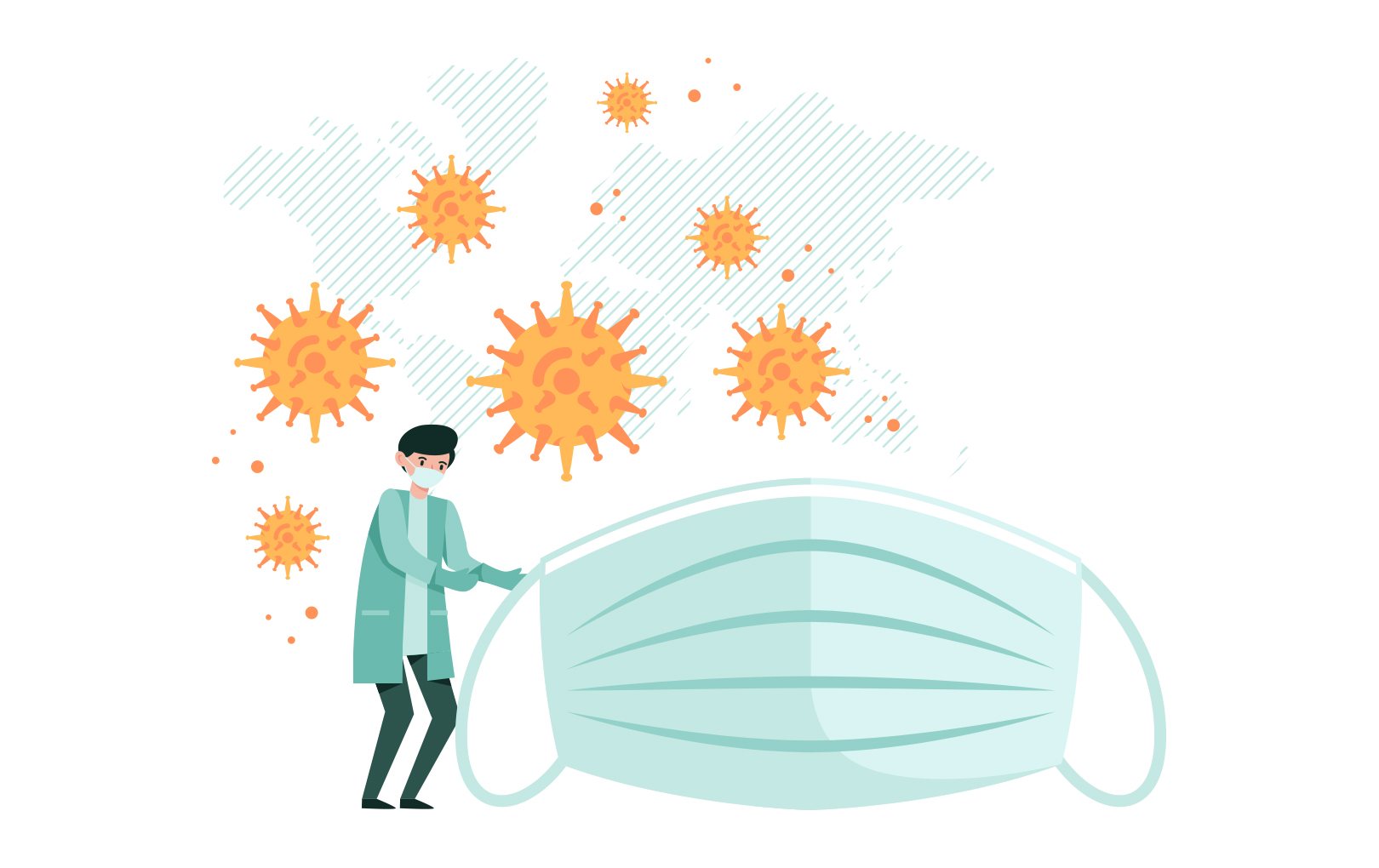
Economic Policies for the COVID-19 War
The COVID-19 pandemic is a crisis like no other. It feels like a war, and in many ways it is.
An ongoing worldwide pandemic of coronavirus disease 2019 (COVID-19), a novel infectious disease caused by severe acute respiratory syndrome coronavirus 2 (SARS-CoV-2), was first confirmed to have spread to Italy on 31 January 2020, when two Chinese tourists in Rome tested positive for the virus.
A virus is a submicroscopic infectious agent that replicates only inside the living cells of an organism.
Wash your hands, wash your hands, wash your hands. That splash-under-water flick won’t cut it anymore.
Face masks have become a symbol of coronavirus, but stockpiling them might do more harm than good.
This version updates the 27 March publication by providing definitions of droplets by particle size and adding three relevant publications.
Integer purus ipsum, auctor vitae posuere et, consectetur ac leo. Pellentesque sit amet risus sagittis, fermentum ligula.
Integer purus ipsum, auctor vitae posuere et, consectetur ac leo. Pellentesque sit amet risus sagittis, fermentum ligula.
Integer purus ipsum, auctor vitae posuere et, consectetur ac leo. Pellentesque sit amet risus sagittis, fermentum ligula.
It is caused by a member of the coronavirus family that has never been encountered before. Like other coronaviruses, it has transferred to humans from animals.
According to the WHO, the most common symptoms of Covid-19 are fever, tiredness and a dry cough. Some patients may also have a runny nose, sore throat, nasal congestion and aches and pains or diarrhoea.

You can protect yourself and help prevent spreading the virus
to others if you:

Lorem ipsum dolor sit amet, consectetur adipiscing elit. Pellentesque consectetur leo a velit mattis.
Read more
Lorem ipsum dolor sit amet, consectetur adipiscing elit. Pellentesque consectetur leo a velit mattis.
Read more
Lorem ipsum dolor sit amet, consectetur adipiscing elit. Pellentesque consectetur leo a velit mattis.
Read more
Lorem ipsum dolor sit amet, consectetur adipiscing elit. Pellentesque consectetur leo a velit mattis.
Read more
Lorem ipsum dolor sit amet, consectetur adipiscing elit. Pellentesque consectetur leo a velit mattis.
Read more
Lorem ipsum dolor sit amet, consectetur adipiscing elit. Pellentesque consectetur leo a velit mattis.
Read moreProtect yourself and others against infections






An ongoing worldwide pandemic of coronavirus disease 2019 (COVID-19), a novel infectious disease caused by severe acute respiratory syndrome coronavirus 2 (SARS-CoV-2), was first confirmed to have spread to Italy on 31 January 2020, when two Chinese tourists in Rome tested positive for the virus.
Coronaviruses are a large family of viruses which may cause illness in animals or humans. In humans, several coronaviruses are known to cause respiratory infections ranging from the common cold to more severe diseases such as Middle East Respiratory Syndrome (MERS) and Severe Acute Respiratory Syndrome (SARS). The most recently discovered coronavirus causes coronavirus disease COVID-19.
COVID-19 is the infectious disease caused by the most recently discovered coronavirus. This new virus and disease were unknown before the outbreak began in Wuhan, China, in December 2019.
The most common symptoms of COVID-19 are fever, tiredness, and dry cough. Some patients may have aches and pains, nasal congestion, runny nose, sore throat or diarrhea. These symptoms are usually mild and begin gradually. Some people become infected but don’t develop any symptoms and don't feel unwell.
People can catch COVID-19 from others who have the virus. The disease can spread from person to person through small droplets from the nose or mouth which are spread when a person with COVID-19 coughs or exhales. These droplets land on objects and surfaces around the person.
Only wear a mask if you are ill with COVID-19 symptoms (especially coughing) or looking after someone who may have COVID-19. Disposable face mask can only be used once. If you are not ill or looking after someone who is ill then you are wasting a mask. There is a world-wide shortage of masks, so WHO urges people to use masks wisely.
WHO advises rational use of medical masks to avoid unnecessary wastage of precious resources and mis-use of masks (see Advice on the use of masks).
The most effective ways to protect yourself and others against COVID-19 are to frequently clean your hands, cover your cough with the bend of elbow or tissue and maintain a distance of at least 1 meter (3 feet) from people who are coughing or sneezing. See basic protective measures against the new coronavirus for more information.
Stay aware of the latest information on the COVID-19 outbreak, available on the WHO website and through your national and local public health authority. Many countries around the world have seen cases of COVID-19 and several have seen outbreaks. Authorities in China and some other countries have succeeded in slowing or stopping their outbreaks. However, the situation is unpredictable so check regularly for the latest news.
You can reduce your chances of being infected or spreading COVID-19 by taking some simple precautions:
If you are at higher risk of getting very sick from COVID-19, you should: stock up on supplies; take everyday precautions to keep space between yourself and others; when you go out in public, keep away from others who are sick; limit close contact and wash your hands often; and avoid crowds, cruise travel, and non-essential travel. If there is an outbreak in your community, stay home as much as possible. Watch for symptoms and emergency signs. If you get sick, stay home and call your doctor. More information on how to prepare, what to do if you get sick, and how communities and caregivers can support those at higher risk is available on People at Risk for Serious Illness from COVID-19.
In healthcare settings across the United States, donated blood is a lifesaving, essential part of caring for patients. The need for donated blood is constant, and blood centers are open and in urgent need of donations. CDC encourages people who are well to continue to donate blood if they are able, even if they are practicing social distancing because of COVID-19. CDC is supporting blood centers by providing recommendations that will keep donors and staff safe. Examples of these recommendations include spacing donor chairs 6 feet apart, thoroughly adhering to environmental cleaning practices, and encouraging donors to make donation appointments ahead of time.
Current symptoms reported for patients with COVID-19 have included mild to severe respiratory illness with fever1, cough, and difficulty breathing. Read about COVID-19 Symptoms.
Not everyone needs to be tested for COVID-19. For information about testing, see Testing for COVID-19.
The process and locations for testing vary from place to place. Contact your state, local, tribal, or territorial department for more information, or reach out to a medical provider. State and local public health departments have received tests from CDC while medical providers are getting tests developed by commercial manufacturers. While supplies of these tests are increasing, it may still be difficult to find someplace to get tested. See Testing for COVID-19 for more information.
Using the CDC-developed diagnostic test, a negative result means that the virus that causes COVID-19 was not found in the person’s sample. In the early stages of infection, it is possible the virus will not be detected.
For COVID-19, a negative test result for a sample collected while a person has symptoms likely means that the COVID-19 virus is not causing their current illness.
COVID-19 is caused by a coronavirus called SARS-CoV-2. Coronaviruses are a large family of viruses that are common in people and may different species of animals, including camels, cattle, cats, and bats. Rarely, animal coronaviruses can infect people and then spread between people. This occurred with MERS-CoV and SARS-CoV, and now with the virus that causes COVID-19. More information about the source and spread of COVID-19 is available on the Situation Summary: Source and Spread of the Virus.
The virus that causes COVID-19 is thought to spread mainly from person to person, mainly through respiratory droplets produced when an infected person coughs or sneezes. These droplets can land in the mouths or noses of people who are nearby or possibly be inhaled into the lungs. Spread is more likely when people are in close contact with one another (within about 6 feet).
COVID-19 seems to be spreading easily and sustainably in the community (“community spread”) in many affected geographic areas. Community spread means people have been infected with the virus in an area, including some who are not sure how or where they became infected.
Learn what is known about the spread of newly emerged coronaviruses.
The number of cases of COVID-19 being reported in the United States is rising due to increased laboratory testing and reporting across the country. The growing number of cases in part reflects the rapid spread of COVID-19 as many U.S. states and territories experience community spread. More detailed and accurate data will allow us to better understand and track the size and scope of the outbreak and strengthen prevention and response efforts.
Based on information about this novel coronavirus thus far, it seems unlikely that COVID-19 can be transmitted through food – additional investigation is needed.
During an outbreak, stay calm and put your preparedness plan to work. Follow the steps below:
Put your household plan into action.
Depending on the situation, public health officials may recommend community actions to reduce exposures to COVID-19, such as school dismissals. Read or watch local media sources that report school dismissals or and watch for communication from your child’s school. If schools are dismissed temporarily, discourage students and staff from gathering or socializing anywhere, like at a friend’s house, a favorite restaurant, or the local shopping mall.
Follow the advice of your local health officials. Stay home if you can. Talk to your employer to discuss working from home, taking leave if you or someone in your household gets sick with COVID-19 symptoms, or if your child’s school is dismissed temporarily. Employers should be aware that more employees may need to stay at home to care for sick children or other sick family members than is usual in case of a community outbreak.
CDC makes recommendations, shares information, and provides guidance to help slow down the spread of COVID-19 in the U.S. including guidance for schools and businesses. CDC regularly shares information and provides assistance to state, local, territorial, and tribal health authorities. These local authorities are responsible for making decisions including “stay at home” or “shelter in place.” What is included in these orders and how they are implemented are also decided by local authorities. These decisions may also depend on many factors such as how the virus is spreading in a certain community.
There is no reason at this time to think that any animals, including pets, in the United States might be a source of infection with this new coronavirus that causes COVID-19. To date, CDC has not received any reports of pets or other animals becoming sick with COVID-19 in the United States.
Pets have other types of coronaviruses that can make them sick, like canine and feline coronaviruses. These other coronaviruses cannot infect people and are not related to the current COVID-19 outbreak.
However, since animals can spread other diseases to people, it’s always a good idea to practice healthy habits around pets and other animals, such as washing your hands and maintaining good hygiene. For more information on the many benefits of pet ownership, as well as staying safe and healthy around animals including pets, livestock, and wildlife, visit CDC’s Healthy Pets, Healthy People website.
There is no reason to think that any animals, including shelter pets, in the United States might be a source of COVID-19.
No. At this time, testing of animals for COVID-19 is not recommended.
At this time, there is no evidence that the virus that causes COVID-19 can spread to people from the skin or fur of pets.
Talk to your veterinarian about the best ways to care for your pet.

The COVID-19 pandemic is a crisis like no other. It feels like a war, and in many ways it is.

The coronavirus continues to spread. As more countries impose quarantines and social distancing.

Today we face economic upheaval potentially more severe than we witnessed during the global financial crisis.